Tips on enjoying and storing your fresh seasonal ingredients
As early as the first week in May, with chilly temperatures and patches of snow still lingering, Winnipeggers Michael Thys and Monika Thiessen began seeing the first signs of fresh new growth in their edible perennials garden. Early on, they enjoy the peppery taste of horseradish leaves, which Thys says are delicious for wrapping fish before putting on the grill. When the first leafy fronds of ostrich fern fiddleheads start appearing in May as well, they prepare them by removing the outer papery bits and then steaming them until tender, before cooking them in the oven with finely chopped onion and bacon.
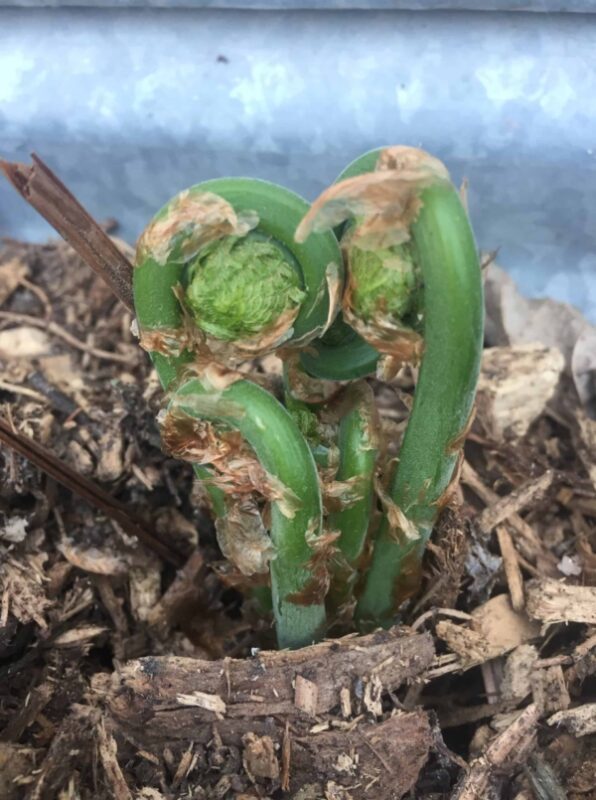
Next on their menu will be chives, mint, thyme, lemon balm, lovage and rhubarb. Once flowers such as daylilies and bee balm (Monarda) begin appearing in their garden, Thys and Thiessen will harvest the edible portions and use them to decorate their favourite dishes such as pizza. From spring to fall, a portion of their harvest will be carefully stored and preserved to enjoy in winter. “In February, it’s like eating summer,” says Thys.
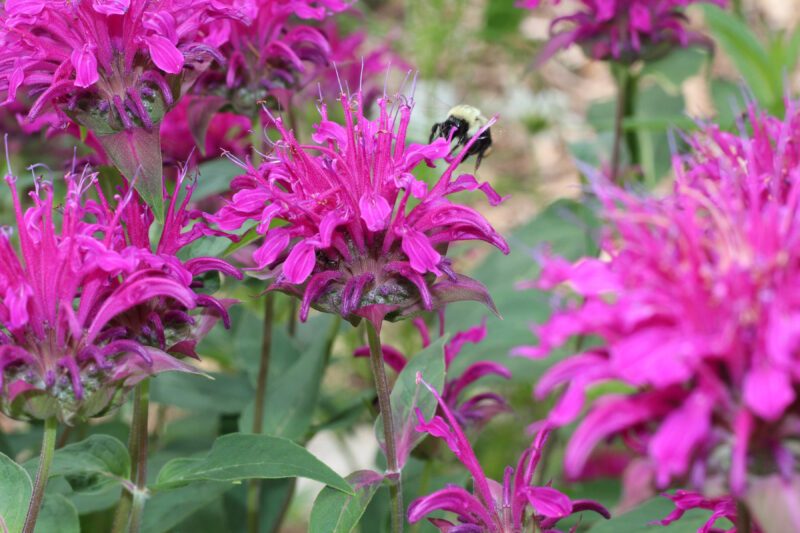
Edible perennial plants are deeper rooted than edibles that are grown as annuals. Once established in the garden, edible perennial plants are also more drought-resistant than annuals. Edible perennials are also less work, says Thys, because they don’t have to be replanted each spring. The same growing considerations apply, of course, such as providing the right amount of light, water and space that different plants need. Lovage, for example, is a leafy perennial herb that is fast growing and needs plenty of room to grow. Thys grows it in a shady, contained area of his garden. “It doesn’t grow as tall or as bushy, but still gives us just the amount we need,” he says.
Lovage is an excellent substitute for celery and much easier to grow, says Thys, who uses the stems and leaves to add its celery-like flavour to soups and other dishes. Thys and Thiessen practice permaculture in their home landscape and say that growing edible perennials is a mainstay of a sustainable ecosystem. Growing diverse edible perennials also opens the door to new and authentic food experiences. “It’s not just about getting calories,” says Thys. By eating a wider diversity of edible plants, he says, we can take advantage of a wider range of beneficial nutrients. Indeed, Thys and Thiessen embrace all sorts of genetically diverse edible perennials, including wild sarsaparilla and raspberry leaves, which they use for making herbal teas.
They also harvest young basswood leaves in early spring to use in salads as a substitute for other, more traditional greens. “Young basswood leaves are amazingly tender in spring and have a lettuce-like flavour,” says Thys.
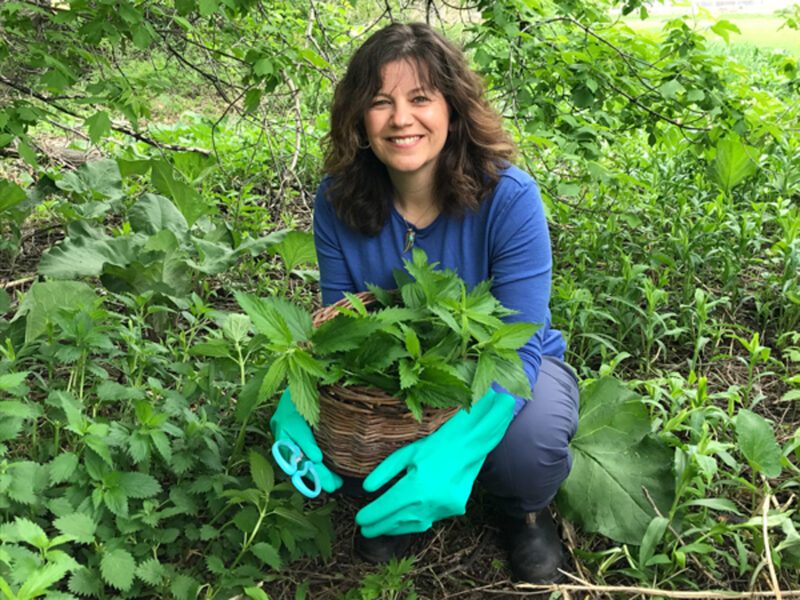
Getty Stewart, a professional home economist who lives in Winnipeg, is also preparing to harvest a range of diverse edible perennials. Rethinking the edible garden is about being aware of what’s growing in your environment and looking at it with fresh eyes, says Stewart. “I really encourage people to think outside of the garden planter box. Chives, for example, are delicious but underutilized. We might snip a few and add them to our salad but there are many other delicious ways to use chives. Chives are one of the earliest edibles in the garden. It’s a great opportunity to get yourself into the spirit of using what’s available to you.”
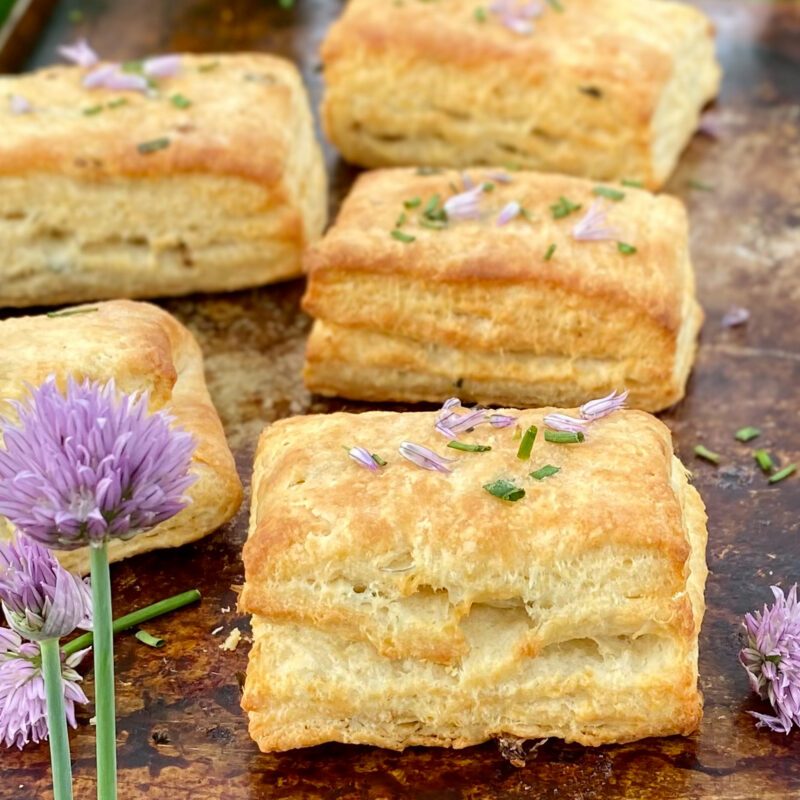
In addition to the green leafy parts, Stewart harvests the light purple, edible chive blossoms and uses them in savory biscuits as well as in herb butter and as a garnish. “When you are finishing off potatoes or a nice, barbecued steak, add a little pat of herb butter and the onion flavour of the chives and blossoms come through.”
Stewart also uses chive blossoms to infuse vinegar. “It is the most beautiful jewel-toned purple colour you can imagine and makes a delicious dressing that you can use all year long.”
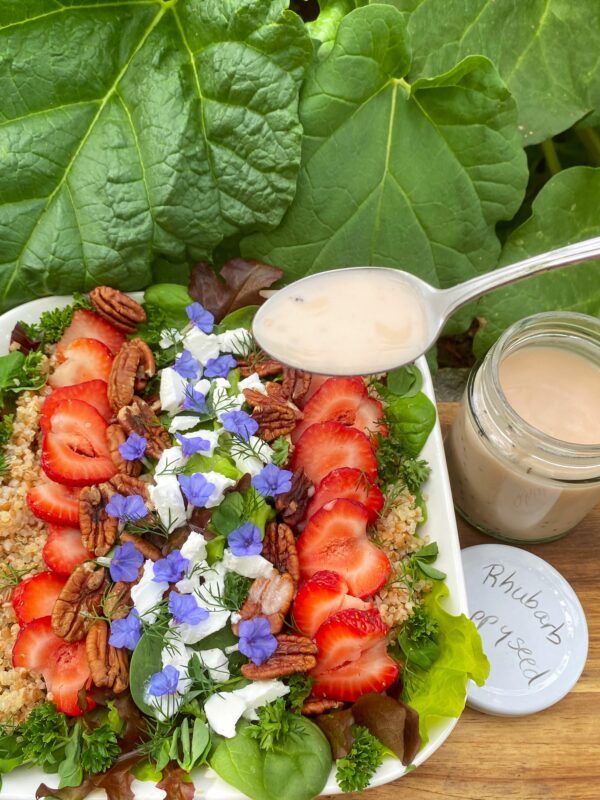
Rhubarb crisp and rhubarb pie might be the first recipes that come to mind when we use the edible stalks of this favourite perennial which is technically a vegetable but used as a fruit. There are many savory ways to use rhubarb. Stewart is the author of a rhubarb e-cookbook with over 50 sweet and savory recipes and preserves. Her recipe for rhubarb and caramelized onions on top of focaccia bread with creamy goat cheese, fresh sage and a drizzle of balsamic vinegar sounds mouth-wateringly delicious.
Need more zip in your sweet and sour chicken recipe? Try adding rhubarb. Rhubarb is also an ingredient in Stewart’s recipe for poppyseed dressing which she likes to drizzle over salad greens garnished with the edible spring flowers of lungwort (Pulmonaria). “Or use your vegetable peeler lengthwise down a stalk of rhubarb and top your fresh salad with a few curly ribbons of rhubarb,” says Stewart.
“We eat with our eyes first and that is an essential element to consider,” says Stewart. A sprinkling of chives or a few curly ribbons of rhubarb may add only a hint of flavour, but it always piques interest. Thys and Thiessen, too, say that their young nieces and nephews are fascinated when they serve pizza sprinkled with the edible flowers of bee balm.
“I like experimenting with edibles because it increases my sensory awareness,” says Stewart. “I observe the different growth stages of plants in my garden which makes me feel more connected to nature.”
There is one other clear benefit. If we are planning to eat something that is growing in our garden, we are more likely to respect the environment in which it grows. There would be far fewer culinary adventures we would knowingly want to explore if plants were sprayed with chemicals or contaminated by pesticide drift.
The common stinging nettle is a plant steeped in history. It has been cultivated for centuries for its medicinal and culinary value and its fibres have been used to make clothing. Stewart harvests stinging nettles found growing along riverbanks. A thick pair of gloves is a necessity when collecting nettles. “But once you blanch the leaves and shoots, the stinging spines are removed,” she says. The tender, young shoots are a tasty substitute for spinach greens. Stewart also adds finely chopped nettles to biscuit, soup, pesto and pasta recipes, and says that sauteed nettles with fried egg is amazing.
Stewart freezes chopped nettle leaves in convenient pucks and uses the same process for sorrel, another edible perennial, as well as for annual greens such as spinach and kale. The first step is to blanch the greens. Blanching is a key step before freezing your freshly harvested greens and veggies, says Stewart. “Blanching stops enzyme action which can cause a shift from moist, juicy and fresh tasting to old and dry tasting.”
Start by adding washed greens that have been cut in small pieces to a large pot of boiling water and boil for two minutes. Using a slotted spoon, remove the chopped greens and place immediately into an ice-cold water bath, drain and pat dry. Press the chopped greens into an ice cube tray, says Stewart, and freeze overnight or for a minimum of three hours. Remove the pucks and seal in a plastic bag or freezer container.
For more recipes and storage tips for homegrown edibles, visit gettystewart.com.









Is there any way to get more directions for some of these recipes?. They sound delicious, especially the foccachio with rhubarb and goat cheese.
Thaks
Hello Marla, many more veggie recipes and tips are available by visiting http://www.gettystewart.com. Happy gardening!